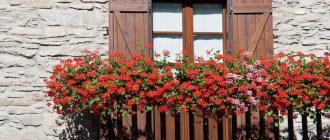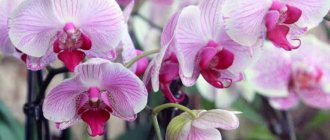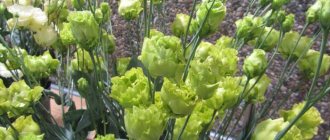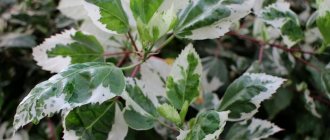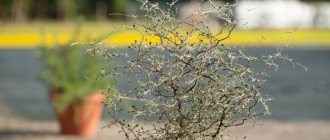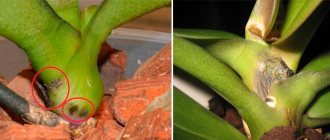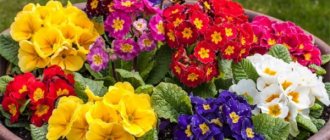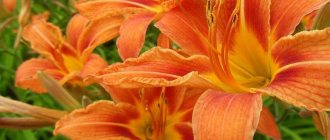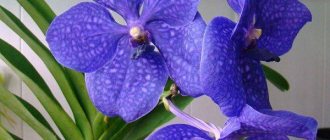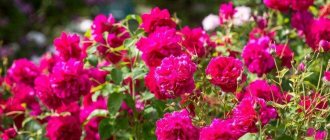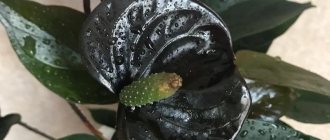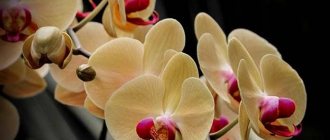How to define a group or class?
There are monopodial
Orchids with a vertical stem growing from a single apical growing point are classified as monopodial types.
They are characterized by the arrangement of juicy, fleshy leaves at the top of the stem, constantly increasing in length. The lower leaves age and droop as they grow, and the younger leaves alternately develop higher on the stem. Buds appear in the leaf axils, from which flower shoots, lateral shoots or aerial roots develop.
The monoploid type includes:
- Brassavola.
- phalaenopsis;
- Wanda;
- Angrecum;
Sympodial with pseudobulbs
Sympodial orchids resemble a climbing vine. Horizontal parts form rhizomes with internodes, vertical shoots form the above-ground part of the plant. Each shoot eventually stops growing in length, its apical bud dies, and new shoots and pseudobulbs appear at the base - above-ground thickenings formed in the internodes of the stem, which serve to store water and nutrients.
Pseudobulbs can be spherical, oval, elongated or flattened.
Sympodial species:
- Miltonia;
- Dendrobium;
- Cattleya;
- Oncidium.
Cascade or ampelous
Ampelous species are characterized by abundant flowering, long slender flower stems with abundant inflorescences and flowers located along the entire length of the flower stem:
- celogyne.
- grammatophyllum;
- dendrobium;
- cymbidium;
For indoor growing in a pot
Most types of orchids are suitable for growing at home. They differ from wild varieties in more lush vegetation and richly colored, large, thickened leaves:
- Cattleya;
- phalaenopsis;
- Miltonia;
- Cumbria.
Refers to street or garden
Garden orchids thrive in moderately warm climates; some hybrids are frost-resistant.
Curtains of low-growing herbaceous orchids in open ground are used in landscape design, but a single flower can decorate any flower bed:
- Tricyrtis.
- Cypripedium;
- Palchatocorynium;
- orchid;
Fragrant
Vanilla
The scent of orchids is designed to attract insects. Some plants have a very unpleasant amber scent, but most species emit spicy, honey, chocolate and fruity aromas. Some species emit scent only at certain times of the day, others only at the beginning of flowering.
Wild species have a strong odor, while domestic plants have a much weaker odor:
- zygopetalum;
- vanilla;
- arachnis;
- catazetum.
Midi, standard and mini
Among some species and hybrids of orchids, division into classes according to size is accepted:
- Mini - miniature orchids up to 20 cm high, with slender fifteen-centimeter flower stems, abundantly strewn with small flowers 3-5 cm in diameter.
- A standard orchid has a height of 60 to 80 centimeters, large flowers up to 15 centimeters in diameter and long pedicels up to 40 centimeters. Most orchids on sale come in a standard size.
- Midi is a compact plant up to 50 cm high. Flower stems reach a diameter of 30 cm, and flower buds - 6-8 cm.
You can read more about mini orchids here. In this article you will learn more about miniature phalaenopsis varieties.
Miniature varieties include:
- phalaenopsis;
- Cattleya;
- Dendrobium;
- Cymbidium;
- Oncidium.
With large and small flowers
Ludisia jewelica
The beauty of an orchid lies in its unusual colors. Large single flowers bloom only at the top of the peduncle; small spiral false inflorescences in the shape of bells or spikes often decorate the entire length of the peduncle.
Large-flowered orchids:
- Cymbidium.
- phalaenopsis;
- Cattleya;
- Cumbria;
Small-flowered varieties:
- rhynhostilis;
- Sidiraea japonica;
- Ludisia;
- orchid.
What does a bumblebee eat?
Clover is the favorite delicacy of bumblebees.
Perhaps these creatures are the most finicky of the bee order in terms of food. If wasps can eat jam, honey, tree sap and other sweets, then bumblebees have only pollen and nectar in their diet. However, the list of plants from which they collect food is very long. They pollinate almost all flowers that grow in their habitats. It is often used in gardening. If a beehive has appeared next to the garden, there is no doubt that in the near future there will be a large harvest in the garden beds.
The larvae also need food, so upon returning to the nest, individuals try to bring as much nectar as possible, which serves as food for future offspring. If necessary, the cubs are also fed home-produced honey.
The bumblebee's favorite flower is clover. He is attracted by the smell and color of the plant, and as he flies past he cannot resist. It has also been noticed that bumblebees, just like other bees, are more willing to sit on bright buds than on those that have faded colors. However, if there is no other vegetation nearby, the insect will not hesitate to land on them.
Geography of growth
The humid climate of the tropical and subtropical forests of Southeast Asia is most favorable for epiphytic plants. However, the ability of orchids to adapt to different living conditions is so great that they have spread throughout the world.
Botanists distinguish four zones in which orchids live:
- Temperate latitudes.
- Equatorial - South and Central America, African coast, Madagascar.
- Rocky Mountains - Southeast Asia, the mountains of Brazil and the Andes.
- Steppe.
Tropical Asian
Asian orchids are famous for their variety, which cannot be found in stores. Connoisseurs of rare plants order dendrobium, vanda, moccara, oncidium, phalaenopsis, among which miniature varieties are the most popular.
The biggest challenge in growing these plants is adapting to local conditions.
In the first days after transplantation, the flower requires a warm, bright place with high humidity, and only after a long rest can the plant be replanted.
Thai
There are more than 20 thousand species of orchids in Thailand. They grow on the trunks of street trees, in pots at the entrances to cafes and shops, and flirtatiously peer into the windows of houses. Stems of local varieties are the most popular souvenir among tourists, despite the fact that local law does not allow the export of orchids in pots.
The Thais have come up with an unusual way to export plants: in plastic or glass bottles with nutritional gel. Orchids cross the border of Thailand and, once transplanted, take root and are easy to care for at home.
Crimean
There are 45 species of orchids on the Crimean Peninsula:
- orchid;
- Comperia compera;;
- dremlik;
- Anacamptis;
- limodorum.
Siberian
For most people in Siberia, orchids are meaningless, but in this harsh climate there are about forty terrestrial species:
- Fingerroot.
- orchid breeding;
- orchid
- Buttercup;
- dreamlin;
Where does the bumblebee live?
Habitat of bumblebees
Due to their good adaptation to environmental conditions, bumblebees live in almost all corners of the planet. Exceptions are places where there is very little vegetation, as well as in hot climates. At high temperatures, the insect begins to feel uncomfortable due to the fact that its body already generates a lot of heat during activities.
In some places the number of bumblebees is small. For example, the Arctic Circle is home to small populations of individual species adapted to cold climates and capable of pollinating local vegetation. In Greenland, Alaska and Chukotka they can only be found in alpine meadows. Small populations also occur in lands with a tropical climate.
Interesting fact : in some countries, gardeners specially breed garden bumblebees to increase productivity.
Most species of bumblebees live in Russia, Europe, Asia and America. They enjoy the local climate and abundant vegetation. Not so long ago, insects were specially brought to Australia, to the state of Tasmania. There they are used to increase the yield of clover, and bumblebees cope with their task with five points. And their peacefulness simplifies the process of using them.
Interesting: Bear
